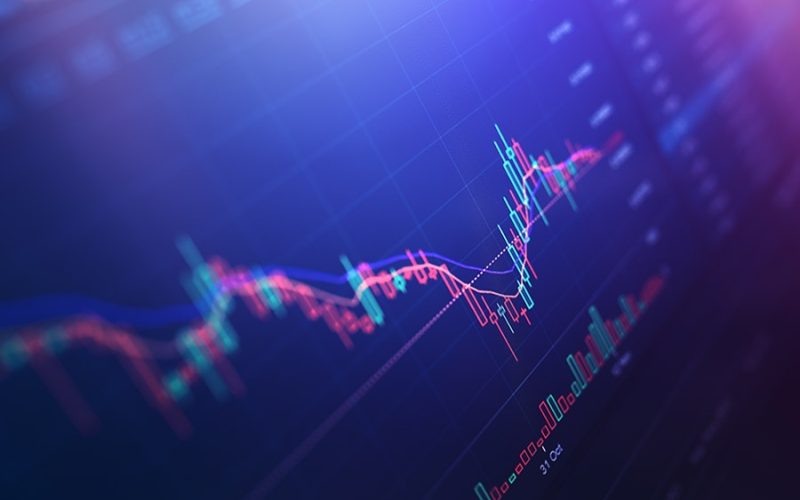by Liz Ann Sonders and Kevin Gordon, Charles Schwab & Company Ltd.
July's hot jobs report will likely keep the Fed in a hawkish position, but key to watch moving forward is a continued softening in leading labor and inflation indicators.
July's headline payrolls were much stronger than expected at 528k vs. the consensus expectation of 250k. Not a single economist as part of the consensus had a number anywhere near that high. In addition, there were positive revisions to the prior two months to the tune of an additional 28k jobs. As a result, payrolls have finally surpassed their pre-pandemic peak, as shown below.
Payrolls > prior peak

Source: Charles Schwab, Bloomberg, Bureau of Labor Statistics (BLS), as of 7/31/2022.
Reaction mechanisms
Bond yields across the curve spiked (especially two-year and three-year yields), leading to a further inversion of the curve (only the 10-year-three-month spread remains positive). The descent of 100 basis points in the 10-year yield—from its near 3.5% peak in mid-June to its recent low of 2.5% as August began—was also a key contributor to the strength in the equity market (the S&P 500's recent trough was in mid-June). A more aggressive Fed, alongside yields rising swiftly, again helps to explain the initial swoon in stocks that followed the release of the jobs report.
Household survey a tell looking ahead?
A tale of two surveys

Source: Charles Schwab, Bloomberg, Bureau of Labor Statistics, as of 7/31/2022. Y-axis is truncated for visuals purposes.
As mentioned (and shown below), there was a drop in the LFPR; at 62.1%, it is at its lowest level since last December. However, better news came via its prime age (25-54) category, which did tick higher. As an aside, I suppose I'm well past my prime since my 58th birthday is approaching quickly, while Kevin is at the start of his prime!
Lacking participation

Source: Charles Schwab, Bloomberg, Bureau of Labor Statistics, as of 7/31/2022.
What say the leading indicators?
Claims' warning?

Source: Charles Schwab, Bloomberg, Department of Labor, as of 7/29/2022. Y-axis truncated for visual purposes.
As noted, claims are a component of The Conference Board's Leading Economic Index (LEI), which has rolled over this year. As shown below, this should begin to show up in weakness in payrolls (but of course that could have been said five minutes before Friday's data release).
LEI's rollover a warning?

Source: Charles Schwab, Bloomberg, Bureau of Labor Statistics, The Conference Board. Leading Economic Index (LEI) as of 6/30/2022. Nonfarm payrolls as of 7/31/2022.
Job openings have rolled over, too, as shown via the Job Openings and Labor Turnover Survey (JOLTS) data below. Openings continue to outpace the number of people unemployed—even accounting for the fact that openings are likely overstated based on how they're calculated, and lag other labor market data by at least a full month.
Openings rolling over

Source: Charles Schwab, Bloomberg, Bureau of Labor Statistics. Unemployed as of 7/31/2022.
JOLTS as of 6/30/2022.
Also fooling economists, layoff announcements are up meaningfully from their 2021 lows. As shown below, three out of the past four months have seen year-over-year increases in job-cut announcements, while the anecdotal data continues to bode fairly ill (notably within the technology sector).
Job-cut announcements turn "positive"

Source: Charles Schwab, Bloomberg, as of 7/31/2022.
As shown in the Institute for Supply Management (ISM) charts in another section below, although both services and manufacturing headline indexes remain in expansion territory (>50), their employment components are decidedly weaker. Another rub is that strong job growth coupled with weak gross domestic product (GDP) growth (or no growth in the case of the first and second quarter this year) is a sign of weak/weakening productivity, which in turn bodes ill for corporate profits and margins.
A less-sweltering inflation forecast?
Shown in the chart below, CPI (as of June) increased at a 9.1% annual rate. As the pace picked up throughout the pandemic, core services (which excludes energy) has become the chief driver, contributing 3.2 percentage points to headline inflation. That's an (unfortunately) impressive feat when considering that Energy contributed 3 percentage points to CPI’s 9.1% gain in June—a month in which oil prices were hovering firmly above $100/barrel.
Unwelcome services force

Source: Charles Schwab, Bloomberg, Bureau of Labor Statistics, as of 6/30/2022. Core excludes food and energy.
As mentioned, commodity prices have experienced a significant decline over the past couple months. Perhaps unsurprisingly, the recent peak in gasoline prices occurred in mid-June (oil prices have also slid considerably in that timeframe), alongside the aforementioned peak in the 10-year yield and the most recent trough for the S&P 500. Price action has started to cement expectations that the peak in headline inflation may be behind us.
Pay (less) extra for shipping

Source: Charles Schwab, Bloomberg, as of 8/4/2022.
The World Container Index (WCI) assessed by Drewry reports actual spot container freight rates for major East West trade routes.
Additionally, the prices paid and supplier deliveries components of both ISM surveys—as shown below—have come off the boil. The upside is that this bodes well for the pass-through (or lack thereof) of higher costs to consumers; but, as mentioned earlier, the employment components of both manufacturing and services are not signaling future strength on the labor front.
Weak prices, weaker labor


Source: Charles Schwab, Bloomberg, as of 7/31/2022.
Supply-demand tug of war
To be sure, demand-driven components have borne responsibility as monetary and fiscal policy were incredibly accommodative at the start of the pandemic; but ripple effects from the pandemic and war in Europe have exacerbated price pressures to the upside throughout the world. As such, demand- and supply-driven contributions to core PCE have been nearly equal, as shown in the chart below.
Meet in the middle

Source: Charles Schwab, Federal Reserve Bank of San Francisco (Supply- and Demand-Driven PCE Inflation – Economic Research (frbsf.org)), as of 6/30/2022.
Figure divides year-over-year changes in core PCE inflation (using authors' calculations) into contributions that can be determined as driven by supply and demand, with remainder marked as ambiguous. Demand-driven categories are identified as those where an unexpected change in price moves in the same direction as the change in quantity in a given month. Supply-driven categories are identified as those where unexpected changes in price and quantity move in opposite directions.
Gotta break even
One of the silver linings for now is that inflation expectations have rolled over, dispelling the notion that individuals expect higher prices to persist for several years to come. As shown below, two- and 10-year inflation breakeven rates are off their peaks of 4.9% and 3%, respectively. Put simply, the market doesn't expect today's sky-high inflation to last long into the future. That gives the Fed some cover, but it's hardly enough (as several members have reminded us) to halt rate hikes in the near term.
Inflation expectations subdued

Source: Charles Schwab, Bloomberg, as of 8/5/2022.
Copyright © Schwab.com
In sum
Even if inflation looks to be peaking and rolling over, the Fed has made it clear that price pressures today remain uncomfortably high. Not only does that keep a 75-basis-point rate hike on the table for September, it increases the potential duration of the rate hiking cycle in the future. Assessing each inflation and jobs report has gotten increasingly difficult given the Fed's relatively new practice of making meeting-by-meeting decisions on policy. However, that reinforces the fact that investors should focus more on the big picture for policy. Macro forces are still unsupportive of stronger economic growth or equity performance, thus keeping pressure on further gains and elevating the probability of a recession.















